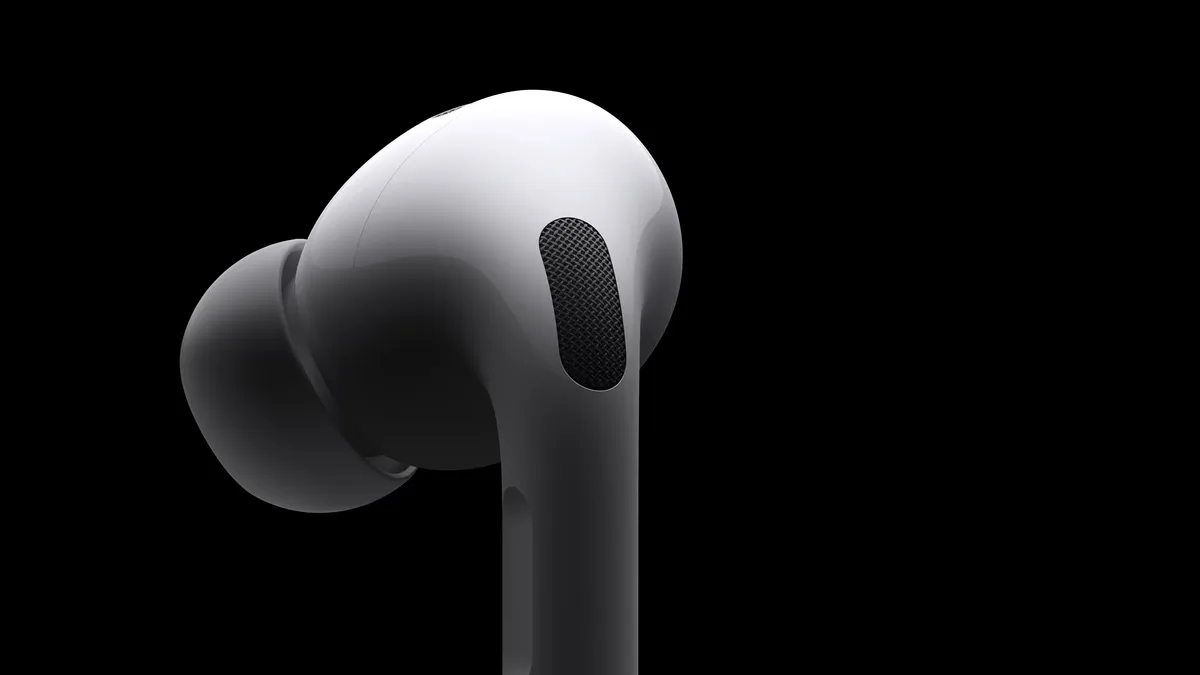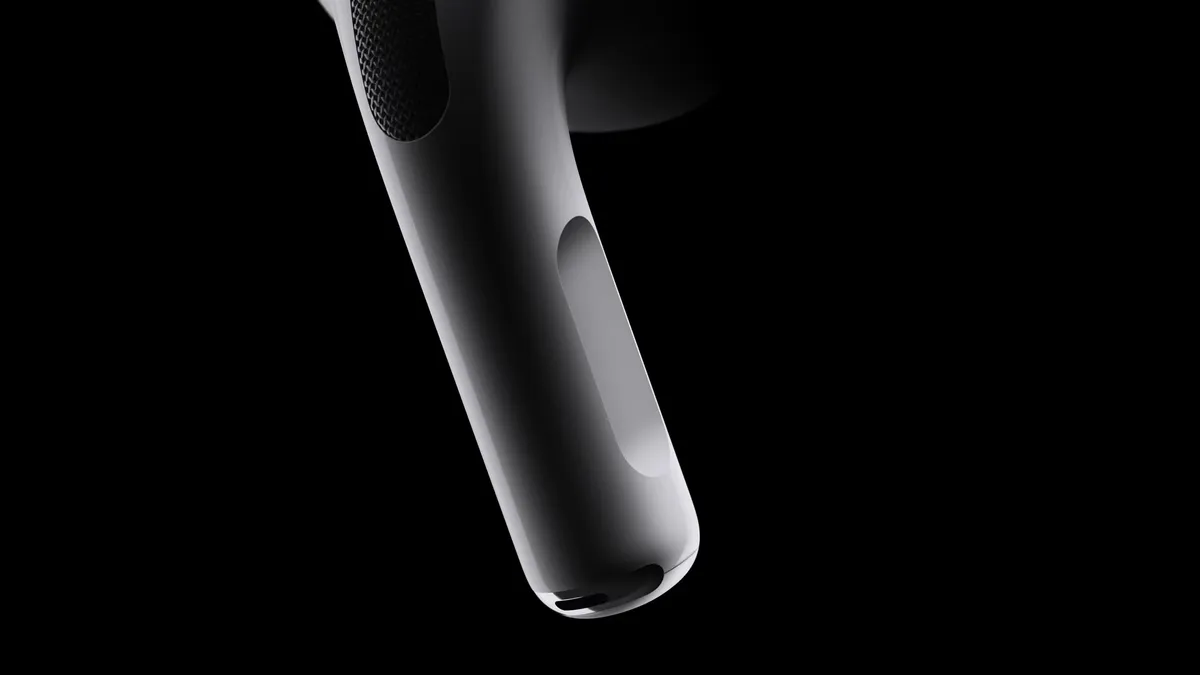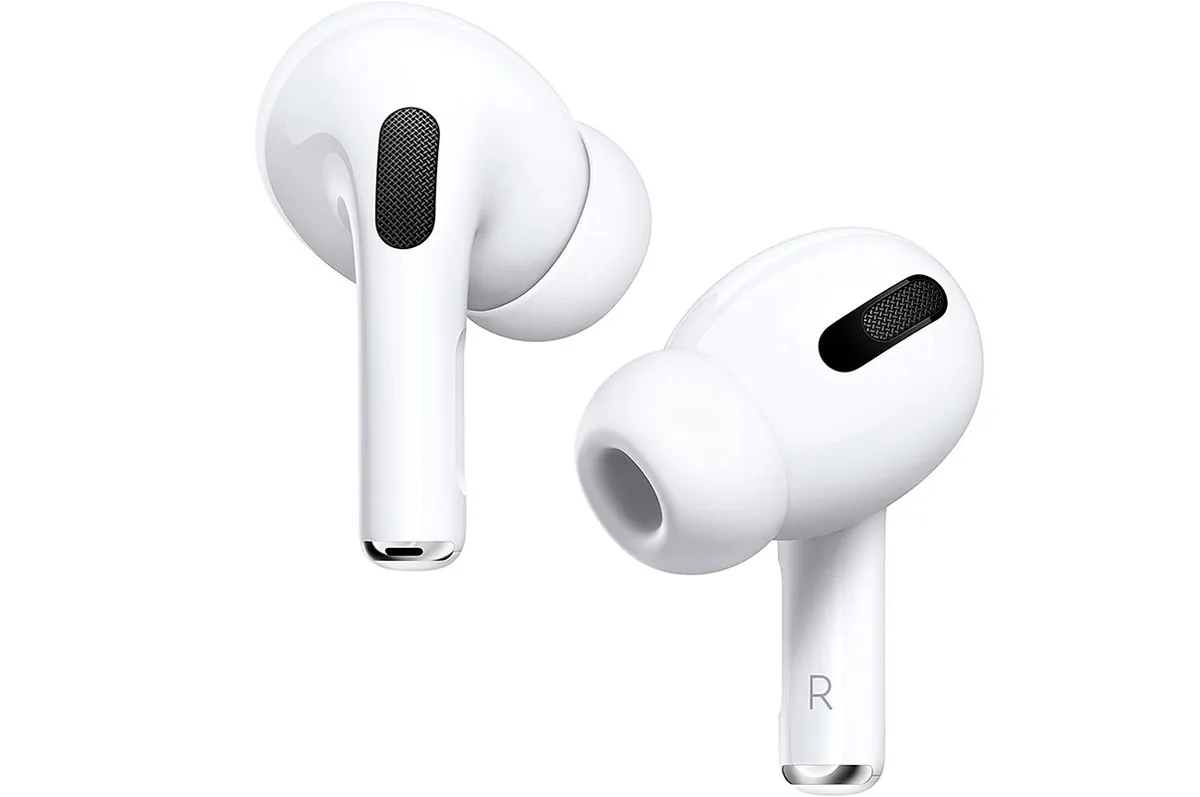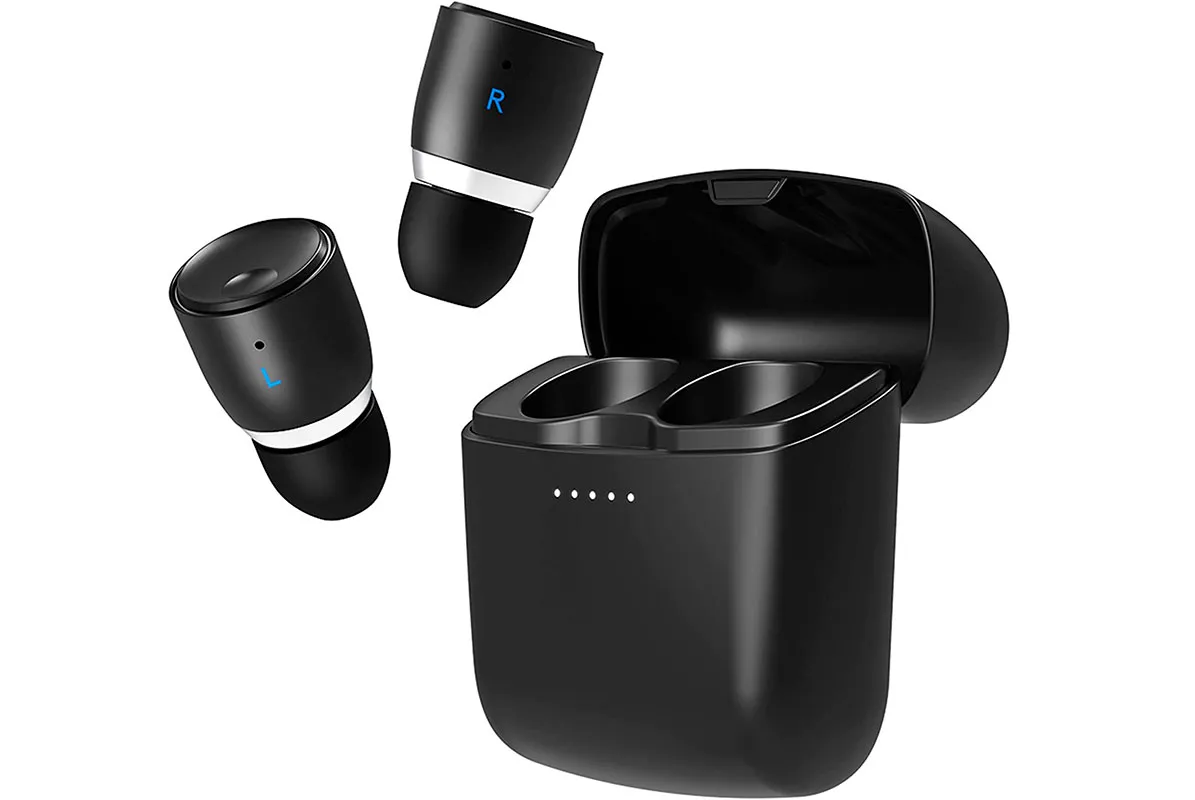AirPods are ubiquitous. Or at least it seems that way if you set foot on a bus, tube or train. Little white baubles dangle out of every commuter’s ears. So what’s the big deal? Is it just a fashion trend, or is it worth following the crowd?
We test out Apple’s new flagship model for their earphones, the AirPods Pro Second Generation to find out whether the crowd really has some wisdom, and these really are the best wireless earphones money can buy.
Great expectations

First off, I’ve got high hopes. The other half owns third generation of AirPods. They rarely leave her ears. I could take it personally, but she reassures me that her use is testament to the AirPods comfort and sound quality. We’ll see…
First, here’s a run through of the significant upgrades. The case is now said to have more accurate sensors if you leave it behind and a louder speaker that you command to sound an alarm if it’s within range of your phone. The latter is both helpful and louder than it’s predecessor. There’s also now a little bar that you can attach a lanyard to.
The battery is longer lasting, with six hours (an hour an half upgrade from its predecessor) of listening time on a single charge. Return them to the case and you’ll get a total of 30 hours before you need to plug anything into a charger – which can now be wired or wireless. The recharge is pleasingly fast, too. You can get an extra half an hour or so of listening with the AirPods in the case in 5 minutes.
Touch controls are new too. Slide up and down the 'stem' of the earbud to adjust volume or give it a squeeze to pause and play music. Holding the panel flicks between noise cancelling and transparent modes. Touch controls are the status quo on earbuds these days. I have no idea why, it’s an impossibly small surface to contend with. Maybe I just have grubby sausage fingers, but I found it too fiddly to bother using.
I can’t overstate how much I’d prefer some simple, quick controls (skip track, volume, shuffle etc) on the case itself, but this criticism can be levelled at every pair of wireless earbuds. For what it’s worth, the tiny touch sensitive surfaces of the AirPods work well if you really don’t want to take your phone out of your pocket. There’s skin sensors on the that spot when you take your airpods out and pause your music work reliably enough for you to forget its there.

Richer sound
The most important, and probably most boring, upgrade is actually the audio chip powering these AirPods – the H2. The extra processing power it provides is what’s behind some of the most significant improvements to the AirPods. First off, there’s spatial audio. This is essentially Apple’s version of surround sound: an attempt to simulate that the music is coming from a performer, in front of you, rather than just into your ears via the left and right channels.
You set this up by sending Apple some ear pics. Presumably not for Tim Cook’s personal collection, but to measure where your ears actually sit in your head. There’s also a short hearing test to check how your AirPods fit and to customise the levels appropriately.
We can’t tell you realistically whether the test works, but Spatial Audio works surprisingly well. Particularly when it comes to movies, it has the effect of opening up what you’re listening to, so that distance and direction is more readily perceivable. In the opening scenes of Andor, you can hear the thrum of a nightclub clearly ahead at the end of the alley, while the strange planet’s denizens call at you from behind. It bestows a level of immersion on these earphones that you could only really get from a big pair of over-ear headphones before.
The same feature is available via Apple Music, signified by the Dolby Atmos logo. You can search for spatial audio in the Music app, but the selection, though broad, feels limited. That said, when you do find an album suited to spatial audio, like The Weeknd’s After Hours it feels like the music’s been let out to play and occupy the space around you. Backing vocals feel like they interject from the sides, the drums beat from further back. It empowers the ability of music that inspires you to visualise what you’re listening to, play Son of Flynnfrom the Tron soundtrack and you’re away in another world.

Even without spatial audio baked into a track, my music sounds big and bassy with tons of fine detail and no distortion. On a subpar pair of earphones, a track like like Sma3 by Moroccan punk band Taqbir, would sound like everything’s been thrown into a washing machine and spat out. With the Airpods the thrashing, thumping guitars fight for attention against the punchy female vocals. It’s full of aggression with no loss of clarity. If post-punk’s not your thing, the Gospel melodies of Gabriels backing singers feel full-bodied and powerful while the lead singer’s delicate vocals remain rich and full of details.
It’s these clashes and contrasts that separate the very best earphones and the Airpods Pro perform brilliantly here. Are they the very best sounding earphones out there? We’re not certain, they are at the very least on a par with the Sony WF-1000MX4. At times the Airpods Pro performance can feel a little clinical, accurate but missing some magic.
Noise-cancellation
Apple says it’s active noise-cancelling is now twice as powerful. While we can’t quite figure out what twice the silence sounds like, the noise cancellation works, almost a little too well. It takes out most of the low-frequency noise and thrum of a tube carriage, helping you escape. Out on the streets it’s a little eery, which means the transparency mode, which pipes in a little of the outside world is definitely a welcome feature. It’s that processor again, managing the signals from the outside world and figuring out what to do with them.
Did we mention they’re comfortable? They feel barely there. You think they’ll drop out half the time, but they never do. It’s got to be down to how weight is distributed across the earphone.
Verdict
These earbuds have the most features we’ve ever seen on a single pair of earphones. There’s probably some we’ve even left out. For example, being able to switch sources, from your phone to your laptop, effortlessly is a joy. Sadly, these features will be lost to anyone not embedded in the Apple universe.
But this isn’t the end of the world as for Android users the Sony WF-1000MX4 are a worthy alternative, and some ears might prefer their warmer sound quality. But for anyone on an Apple device, the AirPods Pro (2nd Generation) are hard to look past, and a worthy upgrade over the standard AirPods thanks to their top-of-the-class noise cancellation tech.
Alternatives
Sony WF-1000XM4

If you don't mind stepping out of the Apple eco-system, the Sony WF-1000XM4 will be the best alternatives to the Apple AirPods Pro. They are frequently considered some of the best in-ear headphones around, offering a fantastic audio experience at a great price point.
Along with a comfortable fit and solid noise-cancellation, there is also a leading battery life to get you through the day.
Apple Airpods Pro (1st generation)

Like everything about the Apple AirPods Pro, except for the price? The previous generation offer a lot of the features that make the earbuds great, just with a considerably lower price tag.
Of course, you are losing out on the use of the new processing chip which powers the 2nd generation headphones, but this is a worthy sacrifice to lower the price.
Cambridge Audio Melomania 1 Plus

If you're on somewhat of a tight budget, there is no better choice than the Melomania 1 Plus from Cambridge Audio. They frequently sit below £50 despite originally costing around £100. The price is low, but the audio performance they put out is incredible, rivalling competitors from Sony and Apple.
The other feature these earbuds excel at is battery life, lasting for a cool 45 hours. However, there is a lack of active noise-cancellation here which might put some people off.
Read more reviews:
- Sony WH-1000XM5 review: Near-flawless headphones and a price to match
- Apple AirPods Max review: Why these headphones are worth £549
- Sony LinkBuds review: A truly unique headphone experience
Looking for more Apple products? Why not check out our roundup of the best MacBook accessories on the market?
